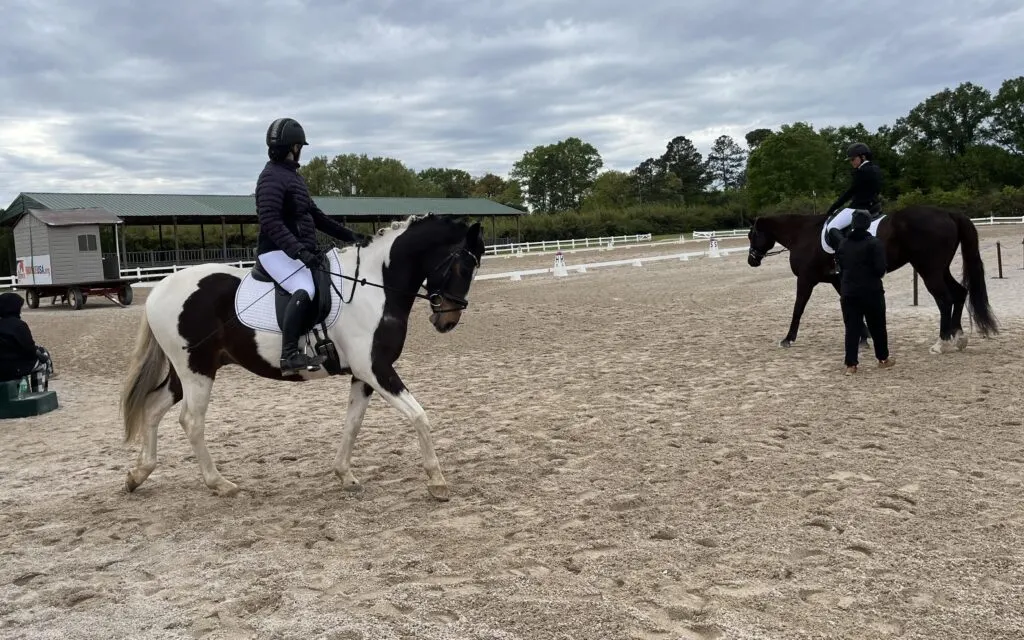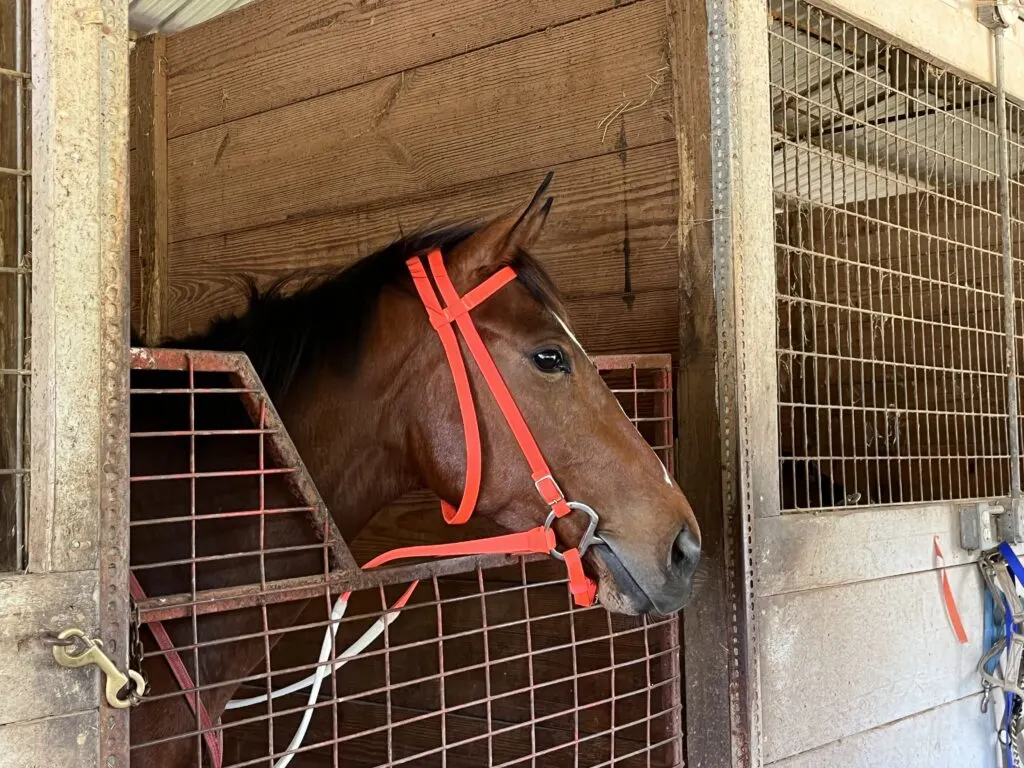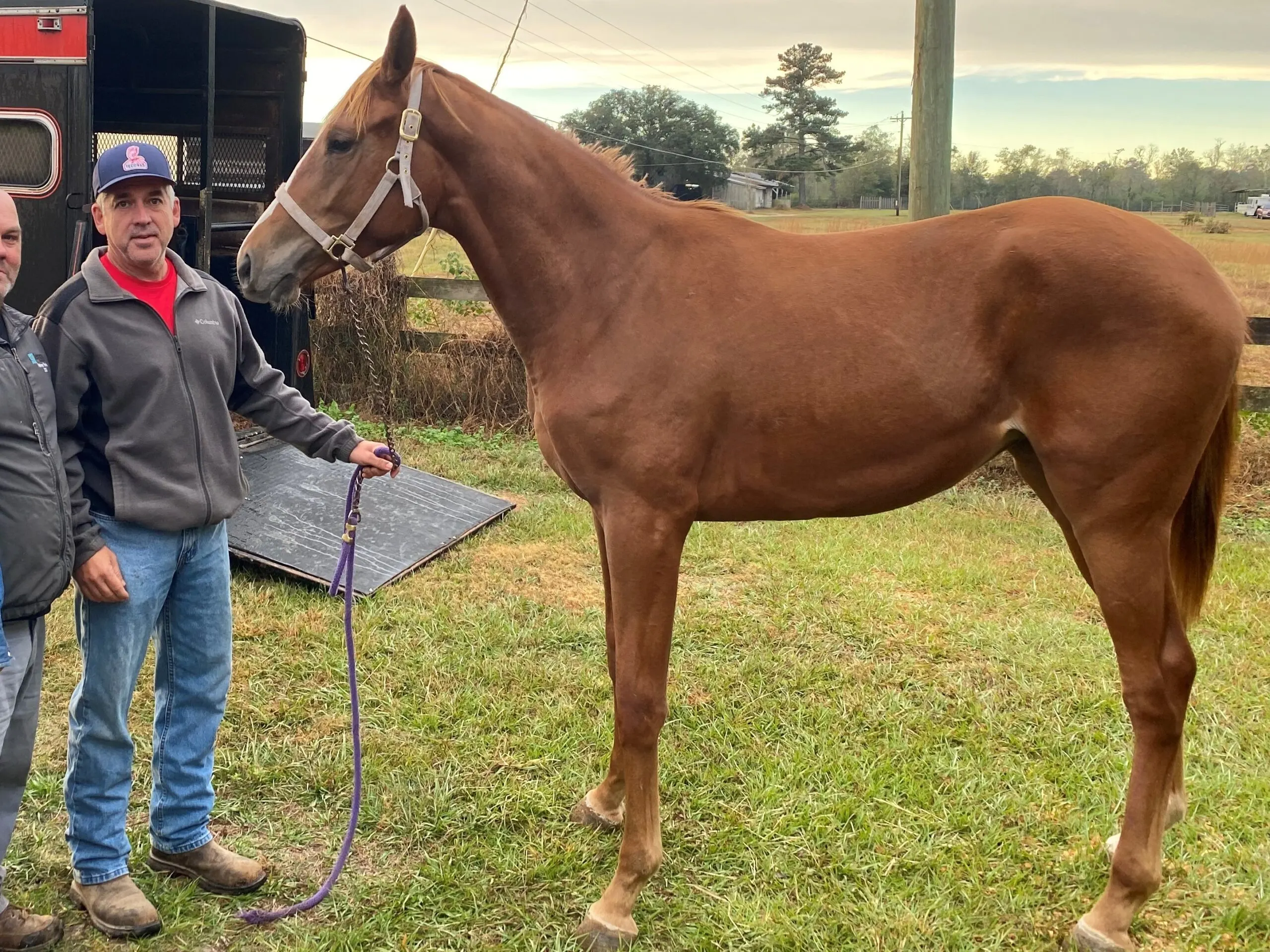Last updated: May 19, 2023
My friends were talking about the most dangerous types of horse-riding activity when someone suggested dressage, and everyone burst into laughter. This moment made me think: Is dressage dangerous?
Dressage, like all equestrian sports, carries inherent risks, including potential injury to both horse and rider. Injuries can result from improper training techniques, inadequate safety equipment, or the use of unsuitable arena surfaces. Despite the inherent risks, with proper training, appropriate safety measures, and a mindful approach to the horse’s well-being, these dangers can be significantly mitigated.
Anytime you work with large, powerful animals, there is always the risk of injury. However, when compared to showjumping, barrel racing, or any other equestrian activities, the risk of getting hurt in dressage is low.

What is Dressage
Dressage is a ballet-like dance achieved through horse movements that are precise and well-rehearsed. It is an art form relying on synchronization between rider and horse, where communication takes place through subtle, natural aids.
Dressage competitions are popular globally and are included in the Olympics, where judges evaluate performances based on rhythm, suppleness, contact, impulsion, straightness, and collection.
You can read more about dressage training here.
The Dangers of Dressage
There is a relative shortage of useful data on the dangers of dressage training and ensuring riders’ and horses’ safety. So I conducted thorough research on the subject and have found some helpful information to share.
Dressage is one of the safest forms of equestrian sports. There is no doubt that eventing, showjumping, and racing are far more dangerous disciplines than dressage. However, dressage has its own set of unique risks and dangers. It is essential to recognize and address these risks to ensure a horse’s health and safety.
Further, dressage relies on a system of stimulus and response between rider and horse that is common to all kinds of horse riding, making the risks of this discipline (and their solutions) significant for all others as well. Here are five dangers of dressage and an explanation of how best to avoid these risks and ensure maximum safety for you and your horse.
1. Training Surface
The surface you train over is critical. Dressage horses have to perform repeated movements like trot, canter, and walking in circles or straight lines. Attempting these movements over a slick surface is dangerous. Training a horse requires a firm surface with good traction so their hard hoofs don’t slip and cause them to stumble or fall.

Certain surfaces like woodchips, sand, and even grass can cause the horse to lose balance and result in lameness. Many performance horse trainers prefer to work their horses in covered arenas over maintained mixed soils or artificial surfaces that provide a cushion to avoid slippage.
Of all the equestrian disciplines, dressage seems to emphasize the type of surface they train on. By focusing on good footing, fewer leg injuries are found in dressage than in many other equestrian competitions.
When you work your horse, make sure your arena has a sound footing that is well-maintained. A suitable training surface is not only for the horse’s safety but also for your well-being. If the horse loses its footing and falls, you will likely take the brunt force of its weight. Some of the safest surfaces to train over are rubber and wax-coated surfaces.
Less expensive arena surfaces are a mixture of sand and clay. You need to have the right consistency and work the arena with a harrow or drag to ensure it doesn’t get hard. We’ve worked horses over this type of arena for years without any issues.
However, young horses are typically more comfortable training on firm, artificial surfaces, where they can have a strong grip and not get tired. Dressage sport boots are useful to support and protect horses’ legs during performances and training. There are a few different styles you can choose from, but I like Kavallerie dressage boots best.
- ? Elegant & Professional Design. Kavallerie horse boots is made for both performance and professional equestrian riding. It’s anatomically-shaped to fit your horse’s legs for support in galloping, dressage training or as an all-purpose field boot.
Prices pulled from the Amazon Product Advertising API on:
Product prices and availability are accurate as of the date/time indicated and are subject to change. Any price and availability information displayed on [relevant Amazon Site(s), as applicable] at the time of purchase will apply to the purchase of this product.
2. Position of a horse’s head and neck
A horse’s head and neck position during training can cause stress in horses. Of particular concern is the effect of riding in the hyperflexion position. Hyperflexion is when a rider forces the horse’s neck into a low, deep, and round position using aggressive force.

The most extreme form of hyperflexion is Rollkur, which is an illegal equestrian practice. Before Rollkur was banned, it was a common practice in dressage and show jumping. Even today, some riders insist it can get the horse to perform better.
However, hyperflexion results from a misunderstanding of the horse’s physiology. It causes its ligaments, joints, and muscles to align in dangerous positions, making it difficult for the horse to breathe, salivate, and even see ahead.
Due to hyperflexion, a horse has to work extra hard to maintain balance because its spine acquires an uncomfortable position, making the horse’s movements look exaggerated.
Hyperflexion is achieved only through brute force, and as such, horses show resistance to riders’ commands and signs of discomfort. Horses also have higher levels of cortisol, showing an acute stress response to hyperflexion. A large horse under acute stress is a danger to its rider and itself.
On the other end of the spectrum, some people can pull the horse’s head back too tightly, causing the neck to be unnaturally elevated. This is done because it results in some movements similar to the improved collection.
However, when a horse’s neck is too elevated, this causes its back to extend, which puts them at risk of injury. Forcing a horse’s head either too far up or down is dangerous for the rider as well. The unnatural head position is stressful, and the horse is more likely to lash out and not follow commands. It’s a cruel and dangerous practice.
To avoid putting your horse in discomfort and pain, novice dressage trainers should ensure the horse’s head position is natural and in line with his body.

3. Time Spent in its stall.
Just like you can ride or train too long in a day, there is also only so long that a horse can spend cooped up inside its stall before it begins to have problems. Horses that spend too much time inside their stall can cause abnormal behavior such as cribbing. This is especially true for performance horses who are used to large crowds and open spaces.
Sport horses are even more likely to be affected by spending too much time inside a stall and will likely become depressed. Horses like to be outside, moving around. The dangers of depression are real.
A study evaluated questionnaires filled by dressage, endurance, and eventing horse owners. It found that dressage horses are likely to exhibit behaviors like wood-chewing, crib-biting, weaving, and box-walking when they spend too much time locked up in a stall.
To ensure your horse’s well-being, it’s essential to ensure they have ample time outdoors under the open sky. Allowing them to graze freely in open pastures can have a positive impact on their temperament and physical health.
This simple practice can help to improve the horse’s overall well-being, making them happier, more relaxed, and more physically fit. Therefore, it’s important to prioritize providing your horse with regular access to the great outdoors.
4. Back Problems and Lameness
A significant danger of dressage is an injury to the horse’s back and temporary lameness. According to a survey, lameness was the most reported injury in dressage horses, seconded by back problems.
However, these problems are common in horses across all disciplines and are part and parcel of keeping horses.
To minimize these issues, ensure your horse trains on appropriate, artificial surfaces and that its body is always correctly aligned. When lameness or back problems do occur, allow it to rest and treat it as appropriate.
5. Safety Equipment
The greatest danger to horses and riders in dressage (as in any other equestrian sport) comes from failing to abide by safety equipment rules.

It is recommended that riders use safety equipment like SEI-certified helmets, safety vests, safety stirrups, and cowboy boots. You can also wear a body protector.
Similarly, the horse’s saddle should be well-fitting and secured in place. Apart from the saddle, pad, and bridle, dressage horses do not need and are not allowed any other equipment. Abiding by safety rules, you can avoid injury. For more details about allowed equipment, have a look at this booklet.
Conclusion
Dressage is the safest of horse-riding activities. Yet, as a dressage horse owner, you have to consider the points listed above to ensure you and your horse’s health and safety.
Below is a YouTube video explaining why Dressage is so hard.
FAQs
What are the best horse breeds for dressage and showjumping?
The best horse breeds for dressage and showjumping often include Warmbloods, particularly Dutch Warmbloods, Hanoverians, and Oldenburgs, known for their power and agility. Thoroughbreds excel due to their speed and athleticism. For both disciplines, Holsteiners and Belgian Warmbloods are highly regarded. However, success often depends more on individual horse temperament, training, and rider connection.
Is dressage cruel to horses?
Dressage, when practiced correctly, is not cruel. It’s based on enhancing a horse’s natural movements and creating harmony between horse and rider. However, improper training methods or pushing a horse beyond its physical capabilities can lead to harm. Ethical training, proper care, and understanding of a horse’s needs are vital to ensure its well-being.
Is using the right saddle pad important in dressage?
Yes, using the correct saddle pad is important in dressage. It should fit well, be comfortable for the horse, and not interfere with the rider’s aids. A good dressage pad is typically contoured to fit the shape of the horse and saddle, providing cushioning without excess bulk. Proper fit helps prevent saddle sores and discomfort.
Meet Miles Henry
An avid equestrian and seasoned racehorse owner, Miles Henry brings his extensive experience to the equine world, proudly associating with the AQHA, The Jockey Club, and various other equine organizations. Beyond the racetrack, Miles is an accomplished author, having published various books about horses, and is a recognized authority in the field, with his work cited in multiple publications.
🔗 Connect with Miles:
Twitter
Facebook
YouTube: Check out race highlights, horse care tips, and more!

